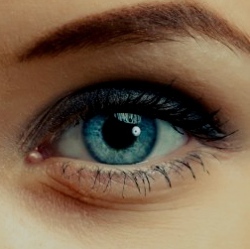
When diagnosing autism spectrum disorder (ASD) in children, doctors currently rely on reports from parents, and observations, but those methods don’t always produce concrete results. Now, researchers at the Cleveland Clinic have looked to remote eye tracking to help streamline the process, providing a solid, early diagnosis that lets treatment start more quickly.
The researchers worked with two groups of patients, aged three to eight, thought to be at high risk of having the condition, testing them with an eye tracking system that recorded the amount of time spent focusing on social and non-social aspects of a selection of images and videos. The amount of time looking at the two on-screen object types was then used to give the patients a rating between one and five, on what the researchers call the Autism Risk Index.
The results strongly supported doctors’ diagnosis of the patients, with 80 percent of the cases being correctly identified. The index was also considered more useful than normal diagnostic techniques, as it gave an indication of the severity of each case, rather than just a negative/positive result.
The researchers believe that the test could provide earlier diagnosis of the condition, in turn allowing treatment to kick off earlier in patients’ lives. Having a more clear-cut test for the condition could also help loved ones accept the diagnosis.
"The lack of objective methods for identifying children with autism can be a major impediment to early diagnosis," said team lead Dr Thomas W Frazier. "Remote eye tracking is easy to use with young children and our study shows that it has excellent potential to enhance identification and, because it is objective, may increase parents’ acceptance of the diagnosis, allowing their children to get treatment faster."
In order to verify the results, the researchers plan to conduct trials with a larger number of participants. In light of the positive results, they believe that the use of remote eye gaze tracking could be a straightforward, cost-effective and accurate method for diagnosing the condition. It could also be used following treatment to assess whether the chosen course of action is proving effective.
